Birth name Paul Gustave Simonon Name Paul Simonon | Role Musician | |
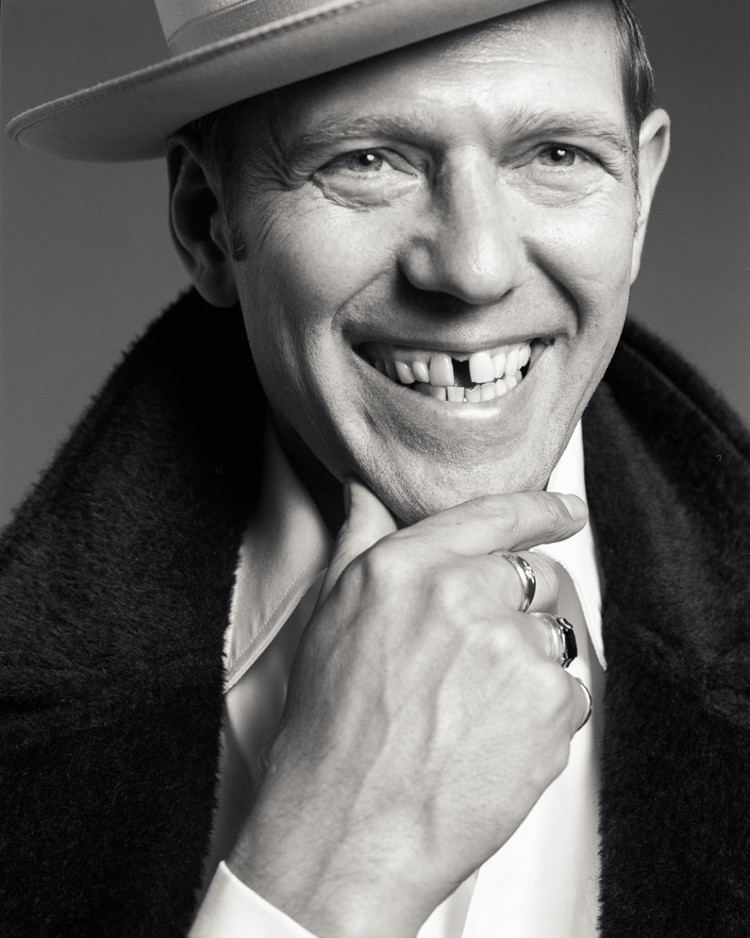 | ||
Occupation(s) Bass guitarist, visual artist, vocalist, songwriter Instruments Bass guitar, guitar, vocals, harmonica Years active 1976–1993, 2006–present Artwork The Thames from Millbank, Waterloo Bridge and the City Similar People Mick Jones, Joe Strummer, Topper Headon, Terry Chimes, Keith Levene | ||
Paul Simonon Recalls A Great Moment in P Bass History | Fender
Paul Gustave Simonon (born 15 December 1955) is an English musician and artist best known as the bassist for the punk rock band The Clash. More recent work includes his involvement in the project The Good, the Bad & the Queen in 2007 with Damon Albarn, Simon Tong and Tony Allen and the Gorillaz album, Plastic Beach in 2010, which along with Albarn saw him reunite with Mick Jones.
Contents
- Paul Simonon Recalls A Great Moment in P Bass History Fender
- The flash collection launch by paul simonon
- BiographyHistory
- With the Clash
- With Havana 3am
- With the Good the Bad the Queen
- With Gorillaz
- Art
- Influences
- Key exhibitions
- Selected solo exhibitions
- Selected group exhibitions
- References

The flash collection launch by paul simonon
Biography/History
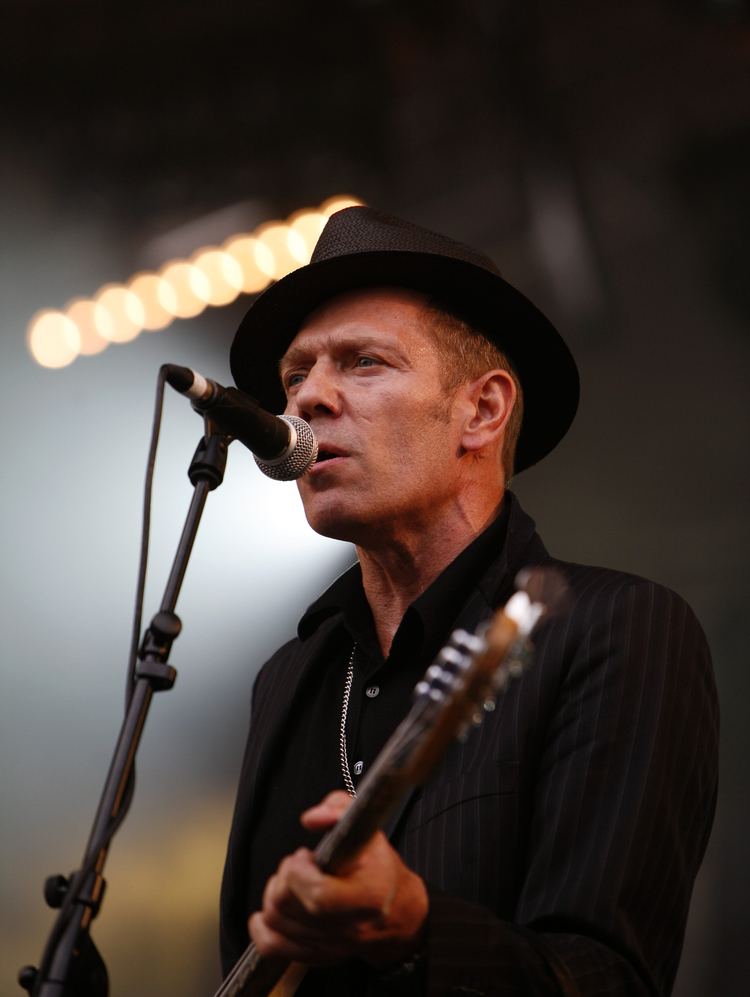
Simonon was born in Thornton Heath, Croydon, Surrey. His father, Gustave, was an amateur artist and his mother, Elaine, was a librarian. He grew up in both the South London area of Brixton and Ladbroke Grove in West London, spending around a year in Siena and Rome, Italy with his mother and stepfather. Before joining the Clash, he had planned to become an artist and attended the Byam Shaw School of Art, then based in Campden St, Kensington.
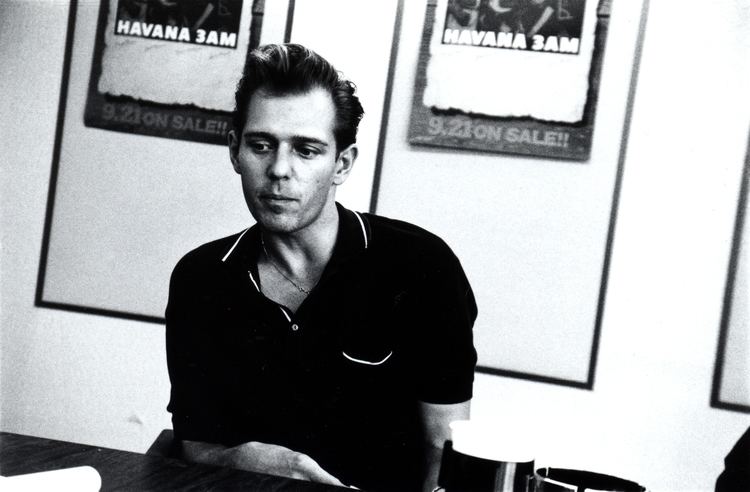
In 1976, he met Mick Jones and six months later the Clash was formed when Joe Strummer joined, with Jones on lead guitar. Simonon learned his bass parts by rote from Jones in the early days of The Clash and still did not know how to play the bass when the group first recorded. He is credited with coming up with the name of the band and was mainly responsible for the visual aspects such as clothing and stage backdrops. He was also immortalised on the front cover of the band's double album London Calling: Pennie Smith's image of him smashing his malfunctioning bass guitar during a 1979 concert in New York City has become one of the iconic pictures of the punk era.
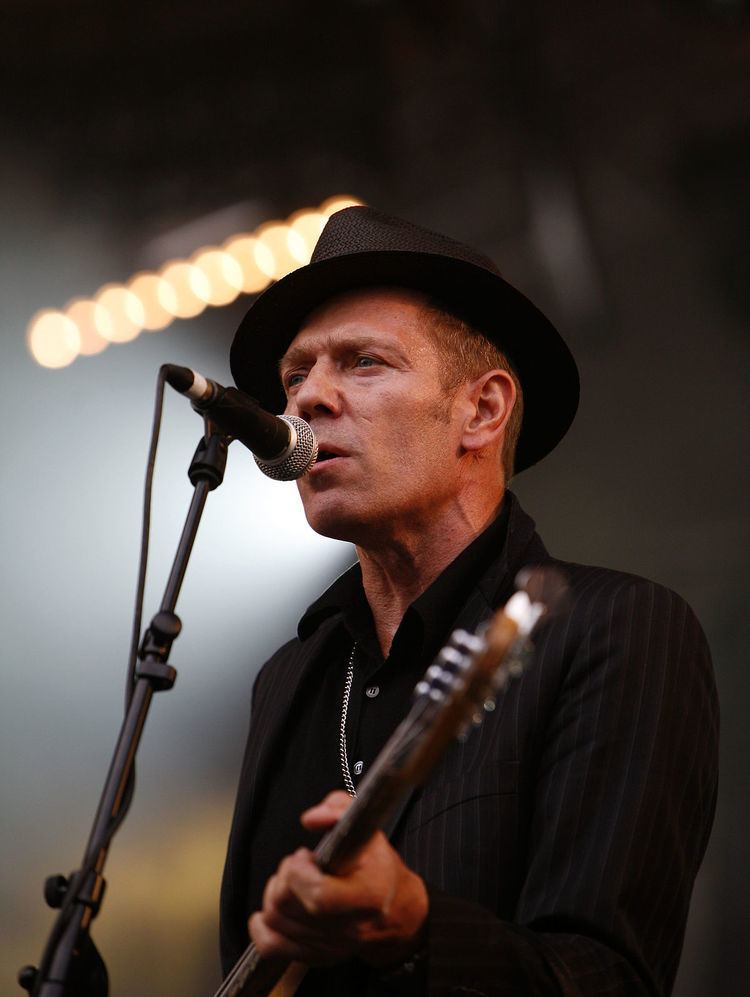
Simonon played bass on almost all of the Clash's songs. Recordings that he did not play on include: "The Magnificent Seven" and "Lightning Strikes (Not Once but Twice)" on Sandinista! (played by Norman Watt-Roy), "Rock the Casbah" on Combat Rock (played by Topper Headon), and 10 of the 12 tracks on Cut the Crap (played by Norman Watt-Roy). Sandinista! featured bass played by Jones or Strummer, some but possibly not all of which Simonon later re-recorded once he rejoined the sessions after filming Ladies and Gentlemen, The Fabulous Stains. Also, when performing "The Guns of Brixton" live he switched instruments with Joe Strummer, because it was easier for this to sing while playing guitar, instead of bass.
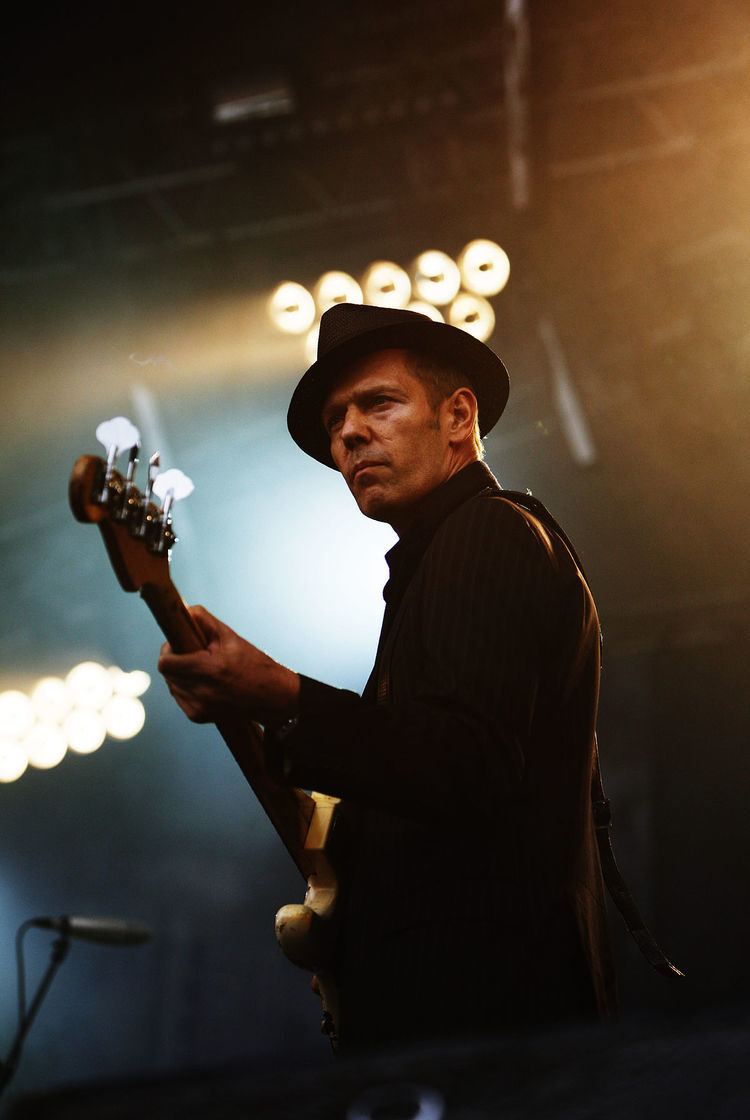
Simonon's contrapuntal reggae/ska-influenced lines set him apart from the bulk of other punk rock bassists of the era in their complexity and the role of the bass guitar within the band.
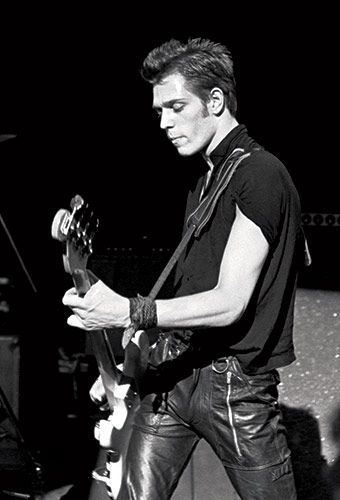
After the Clash dissolved in 1986, Simonon started a band called Havana 3am. They recorded one album in Japan before breaking up. He also participated in a Bob Dylan session along with the Sex Pistols' Steve Jones that became part of the Dylan album Down in the Groove. Also, Simonon works as an artist – his first passion before joining the Clash. He has had several gallery shows, and designed the cover for Big Audio Dynamite's album, Tighten Up, Vol. 88, as well as the cover for "Herculean" from the album The Good, the Bad and the Queen, a project with Damon Albarn on which Simonon plays bass. Paul reunited with Damon Albarn and Mick Jones on the Gorillaz album Plastic Beach, and was also the bassist of the Gorillaz live band supporting Plastic Beach, along with Mick Jones on guitar. The band headlined the 2010 Coachella Festival, and took up residence at the Camden roundhouse for two nights in late April 2010.
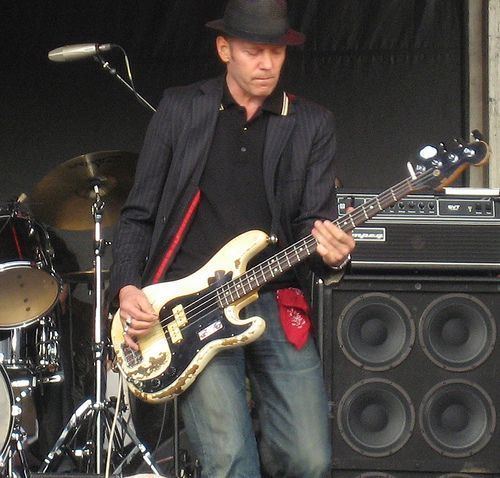
In 2011, Simonon spent time aboard the Greenpeace vessel Esperanza incognito under the guise of "Paul the assistant cook" in response to Arctic oil drilling in Greenland by Cairn oil. He joined other Greenpeace activists in illegally boarding one of Cairn's oil rigs; an action which earned him two weeks in a Greenland jail. His identity was revealed to other crew members after the voyage, and he joined Damon Albarn and the other members of the Good, the Bad, and the Queen for a performance in London celebrating Greenpeace's 40th anniversary.
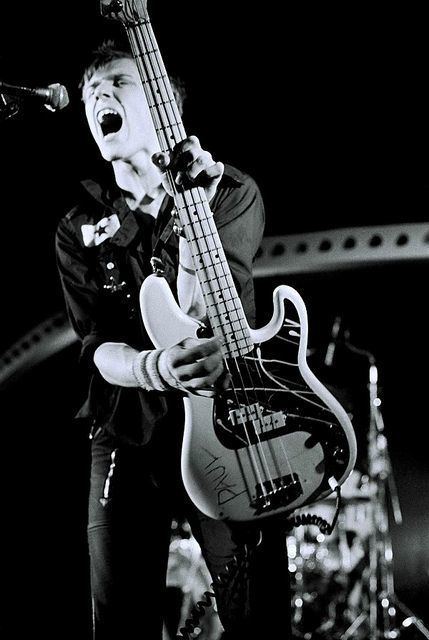
Actor Pete Morrow portrays Simonon in the 2016 film London Town which tells the story of a Clash-obsessed teenager who crosses paths with Joe Strummer by happenstance in 1979 and finds his life changing as a result.The film was met with mostly negative reviews.
With the Clash
With Havana 3 am
With the Good, the Bad & the Queen
With Gorillaz
Simonon reunites with Clash guitarist Mick Jones on the album's title track.
(in Aspen Forest)
Art
An artist his whole life, Simonon’s passion for painting began as a child. His father, Gustave, was an avid amateur painter and Simonon spent a lot of time in his studio, often sleeping there. It was here, surrounded by books and pictures pinned to the walls that Simonon first encountered the works of 19th and 20th century masters, from Impressionism to Cubism and beyond. Introduced to an artist friend of his father’s, Simonon assisted him on projects at an inner city London school, learning the basics of using paint and then supplementing these skills by teaching himself at home. He took up a scholarship at the prestigious Byam Shaw School of Art, then based in Campden St, Kensington (now part of Central Saint Martin’s College of Art and Design) but left before his studies ended to play with the Clash. Using his days off when on tour with the band to visit museums and galleries, Simonon’s enthusiasm for, and knowledge of, the history of art has been a lifelong passion
Influences
In addition to a love of French modernist painting of the late nineteenth century (which took him to the islands of French Polynesia on the trail of Paul Gauguin), Simonon’s painting practice has been heavily influenced by 20th century realism, particularly by the work of the American Ashcan School and the Kitchen sink realism school of painters of 1950s post-War Britain, specifically by their documentation of the living conditions of the working classes. Each style focused on the banal and ordinary while depicting the resultant misery, angst and, at times, violence. In Britain the fractious domestic and economic situation of post-war austerity formed a part of the wider social realism movement, both in the arts and popular culture. It gave rise to the emergence of the subcultures and served as a backdrop to the emergence of Ted, Biker and Rocker subcultures that first appeared in these years, subcultures that actually spanned economic and class divides. Growing up in London in the 1960s, Simonon’s first experiences of this came in the form of the clash between the Mods and Rockers subcultures, a tension which fuelled into the wider dynamics of the ‘angry young man’ attitude and social unrest that came to define youth culture of this period, and which were the genesis of Punk culture in the 1970s. While Simonon is cautious about drawing parallels between his music and his painting, it is clear that British subculture of the 1950s, 1960s and 1970s has been, and remains, essential to both aspects of his life and work.
Key exhibitions
Wot no Bike, ICA Nash and Brandon Rooms, London, 21 January – 7 February 2015, Simonon's most recent exhibition was Wot no Bike at the ICA Nash and Brandon Rooms, London. In this series of new paintings, Simonon depicted his own everyday personal effects including biker paraphernalia such as jackets, boots, helmets, and gloves, alongside his packets of cigarettes and books. Autobiographical in the modernist and realist painting tradition, these oils on canvas are as much self-portraits as they are still lifes, functioning as a visual diary in paint. Wot no Bike is Simonon's personal exploration of British subculture and counterculture in the post-war decades.
To accompany the exhibition, Simonon published a limited edition hardback publication also titled, Wot no Bike,. Featuring 24 of the new paintings it includes an introduction by David Lancaster (writer), a writer on classic bikes and culture and an interview between Simonon and Tim Marlow, Director of Artistic Programmes At the Royal Academy of Arts, London.
Selected solo exhibitions
2015
Wot No Bike, ICA Nash and Brandon Rooms, 21 January - 7 February 2015
2008
Paul Simonon Recent Paintings
2002
From Hammersmith to Greenwich
Selected group exhibitions
2001
Art Tube Exhibition London Underground
2001
Notting Hill Arts Exhibition
2001
Colony Room Show
1998
Eyes Of A Child
1998
Crusaid Edinburgh Art Centre
1996
John Martin Gallery
